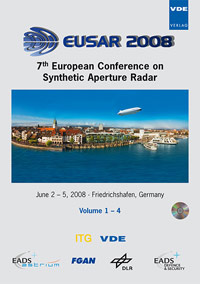A Permanent Response SAR Transponder for Monitoring Ground Targets and Features
Konferenz: EUSAR 2008 - 7th European Conference on Synthetic Aperture Radar
02.06.2008 - 05.06.2008 in Friedrichshafen, Germany
Tagungsband: EUSAR 2008
Seiten: 4Sprache: EnglischTyp: PDF
Persönliche VDE-Mitglieder erhalten auf diesen Artikel 10% Rabatt
Autoren:
Hounam, David (German Aerospace Center - DLR, Germany)
Zwick, Harold; Rabus, Bernhard (MacDonald Dettwiler and Associates - MDA, Canada)
Inhalt:
SAR systems have opened up a wide range of new remote sensing applications by being operated in interferometric modes to add a third measurement dimension and enable target and feature heights to be determined. Changes in height can be monitored with unsurpassed accuracy by acquiring a time series of SAR images, leading to valuable information on geologically instable features. These techniques require the targets or features to yield a stable electrical phase of the response in the SAR image. Naturally occurring targets of this type are referred to as persistent or permanent scatterers and have scattering characteristics that are sufficiently insensitive to the imaging geometry, the time or the environmental conditions. Clearly, many naturally occurring targets and features will not have suitably stable scattering properties. For these it is necessary to artificially modify them to achieve the necessary phase stability. Alternatively, a device providing a stable response has to be attached. The paper describes such a device, namely a self-calibrating, regenerative transponder that is sufficiently compact and autonomous to be attached to even small ground based targets. The Permanent Response SAR Transponder for the Identification and Monitoring of Surface Objects (= PRESTO) was conceived for the Radarsat sensors operating in C–Band but could be employed with other C-Band sensors or modified for other radar bands. The transponder also has a facility for transferring auxiliary data to the SAR by inserting a data burst into the signal returned to the SAR. Such data could be local environmental data or similar from attached external sensors. The paper describes the transponder design.


